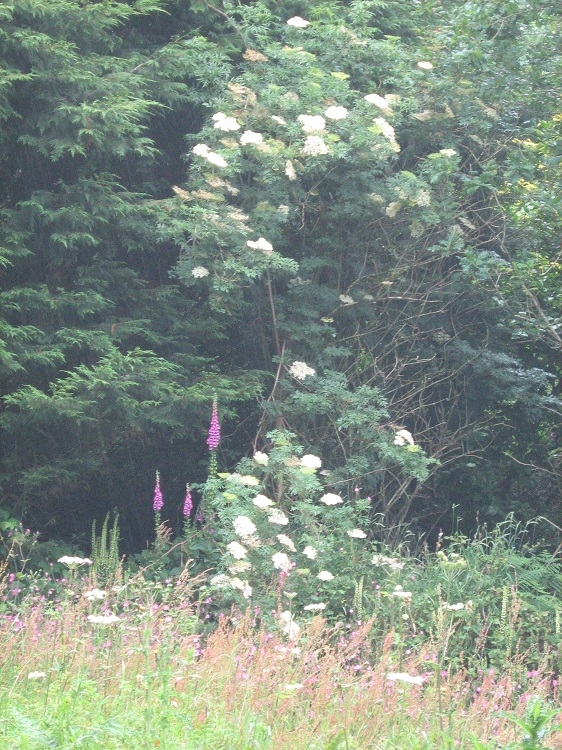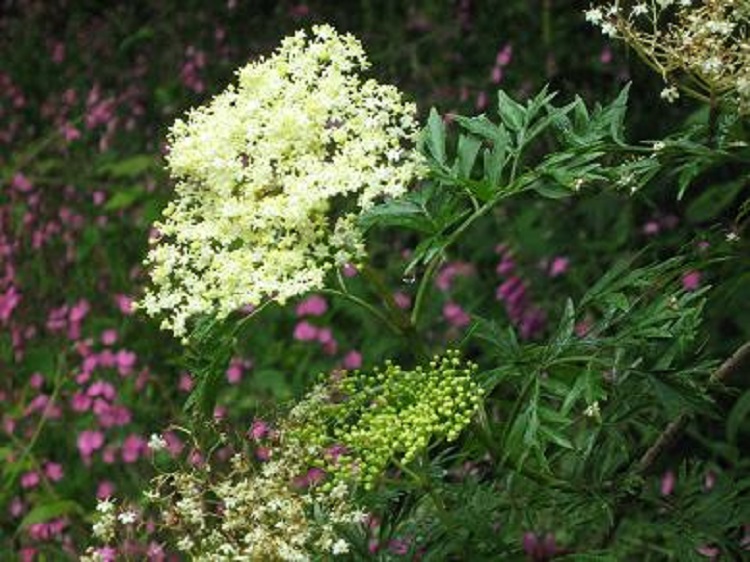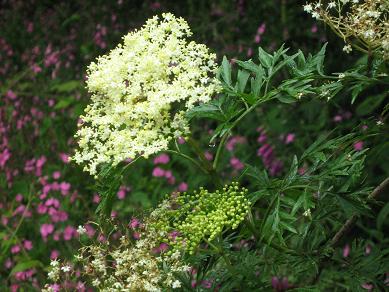 |
The Elderflowers are a very homely group of shrubs. I know some people find the stinky leaves and stems objectionable, but I find it rather charming. A bit
like a small child poking their tongue out at you through the back window of a bus. The purple leaved forms (and there are now many of them) have been very fashionable. This cut leaved form isn't seen very often, but it is quite distinctive and it has marvellous flowers for making Elderflower cordial, wich I manage to do some years. Unfortunately this pant was a victim of 'development'. I need to plant another! Trees and Shrubs online says: "The handsomest cut-leaved variety of common elder, the leaflets being pinnately divided into linear pointed lobes. Known since the 16th century and occurring occasionally in the wild." Writing in 'The Garden', Roy Lancaster says: "It is not often that an elderberry is seen at the Society's shows and even less common when exhibited for an award. So it was a pleasant surprise in June to see an Award of Merit given to the so-called parsley-leaved elderberry - Sambucus nigra forma. laciniata - exhibited as a hardy shrub for flower and foliage by I. R. Dickings... like the species laciniata makes a large rounded shrub or small tree to 15 feet (4.5m) or more in time and is best grown as a specimen or at the rear of a large border to give backing to smaller, more colourful subjects. Although its white flower heads and shining black fruits are attractive enough it is the deeply divided leaflets that commend this shrub which has been around in cultivation since the 16th century. Indeed, it is known to occur in the wild as an occasionl seedling and there may be more than one cultivar in gardens apart from the various other named cultivars which have leaflets with varying degrees of lobing." |
|
| 20th June 2008 | ||


